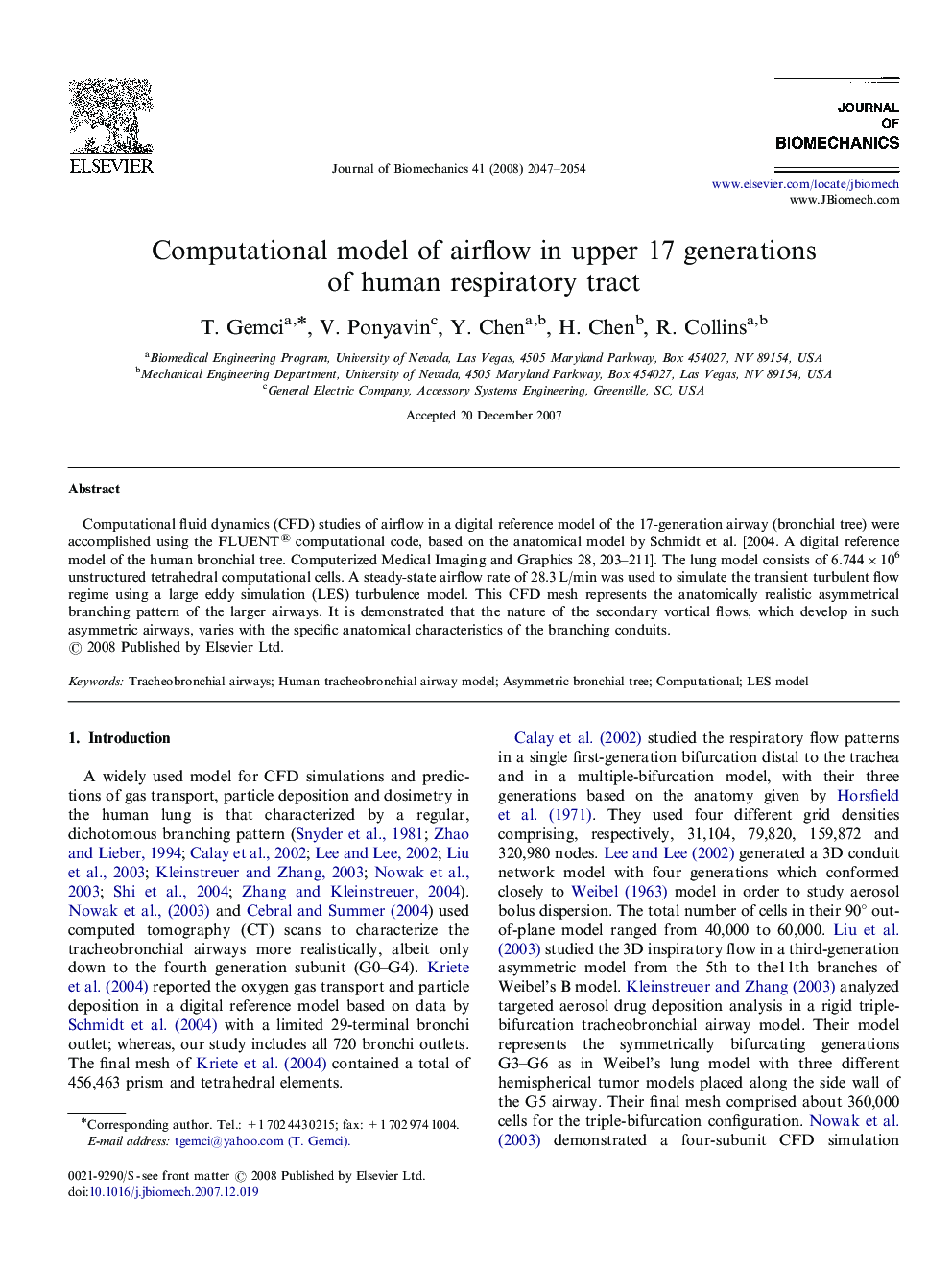| Article ID | Journal | Published Year | Pages | File Type |
|---|---|---|---|---|
| 875180 | Journal of Biomechanics | 2008 | 8 Pages |
Computational fluid dynamics (CFD) studies of airflow in a digital reference model of the 17-generation airway (bronchial tree) were accomplished using the FLUENT® computational code, based on the anatomical model by Schmidt et al. [2004. A digital reference model of the human bronchial tree. Computerized Medical Imaging and Graphics 28, 203–211]. The lung model consists of 6.744×106 unstructured tetrahedral computational cells. A steady-state airflow rate of 28.3 L/min was used to simulate the transient turbulent flow regime using a large eddy simulation (LES) turbulence model. This CFD mesh represents the anatomically realistic asymmetrical branching pattern of the larger airways. It is demonstrated that the nature of the secondary vortical flows, which develop in such asymmetric airways, varies with the specific anatomical characteristics of the branching conduits.
